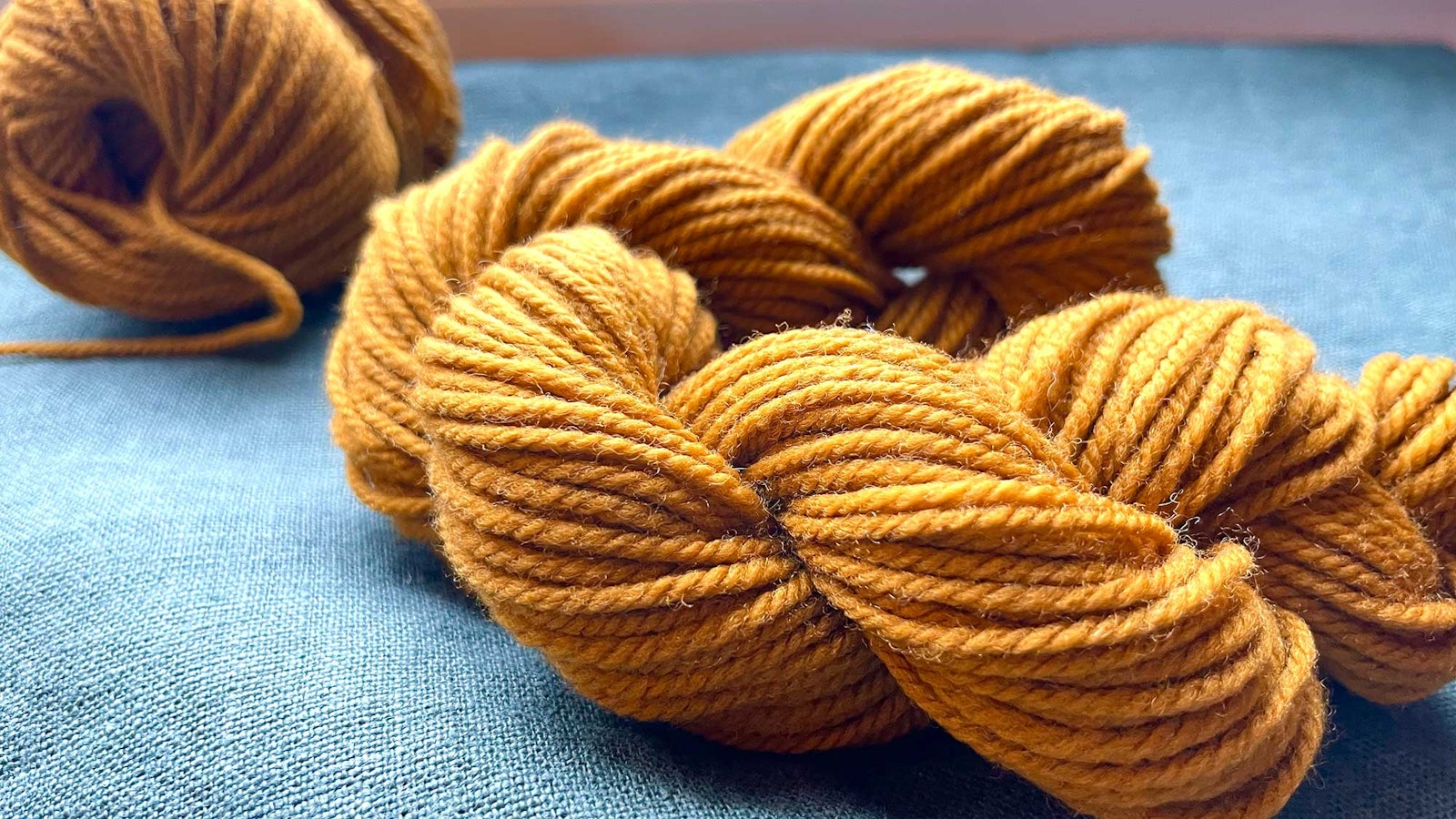Subscriber Exclusive
What is Worsted-Spun?
Brooklyn Tweed Arbor is a worsted-spun DK-weight Targhee yarn; let’s take a closer look.
Brooklyn Tweed Arbor is a worsted-spun DK-weight Targhee yarn; let’s take a closer look. <a href="https://farmfiberknits.com/what-is-worsted-spun/">Continue reading.</a>
https://farmfiberknits.com/cdn-cgi/image/format=auto/https://www.datocms-assets.com/101500/1702935588-brooklyn-tweed-header.jpg?auto=format&w=900
The term worsted usually means a weight of yarn in knitter’s shorthand, but it is an old word that carries many meanings. Brooklyn Tweed’s Arbor is a deliciously worsted DK-weight yarn. Worsted can refer to a yarn weight (gauge), a way the fiber can be prepared for spinning, and a spinning style. Arbor is the latter two, spun from the fine fleece of the American Targhee.
 The smooth surface of a worsted yarn
The smooth surface of a worsted yarn
Knitter’s Taste Test
I knitted a quick swatch in Arbor using stockinette stitch and size 6 (4 mm) needles. After washing and laying flat to dry, the fabric is relaxed and retains the same stitch definition and smooth wooly surface it did in the skein. These are classic elements of a worsted yarn: smooth and crisp.
A classic worsted yarn should also be less likely to pill and shed, with short fibers and tangles removed. I dissected one ply of Arbor to take a look at the staple length of the wool fibers. A long, consistent staple length helps make a yarn more durable.
SUBSCRIBER EXCLUSIVE
The term worsted usually means a weight of yarn in knitter’s shorthand, but it is an old word that carries many meanings. Brooklyn Tweed’s Arbor is a deliciously worsted DK-weight yarn. Worsted can refer to a yarn weight (gauge), a way the fiber can be prepared for spinning, and a spinning style. Arbor is the latter two, spun from the fine fleece of the American Targhee.
 The smooth surface of a worsted yarn
The smooth surface of a worsted yarn
Knitter’s Taste Test
I knitted a quick swatch in Arbor using stockinette stitch and size 6 (4 mm) needles. After washing and laying flat to dry, the fabric is relaxed and retains the same stitch definition and smooth wooly surface it did in the skein. These are classic elements of a worsted yarn: smooth and crisp.
A classic worsted yarn should also be less likely to pill and shed, with short fibers and tangles removed. I dissected one ply of Arbor to take a look at the staple length of the wool fibers. A long, consistent staple length helps make a yarn more durable.[PAYWALL]
 Smooth, parallel fibers that were just a bit under 4 inches (10 centimeters).
Smooth, parallel fibers that were just a bit under 4 inches (10 centimeters).
As someone who prepares my own wool for spinning, I also know that combing (worsted preparation) and worsted spinning take time. As knitters, what does it mean when we see “worsted-spun” on a millspun label?
The Road to Worsted-Spun
Brooklyn Tweed tells us that this Targhee was sourced in Montana and South Dakota. As Montana Targhee shepherd Kristin Bieber showed us in an earlier post, these tough sheep often move over long distances while grazing throughout the year. In the meantime, fleeces pick up bits of plants, a sprinkle of windblown soil, and so on.
 Targhee wool locks (from left): fresh off the sheep, washed, and washed and flick carded. The last pair of locks shows how the fibers can be stretched back out during processing. Photo by Matt Graves
Targhee wool locks (from left): fresh off the sheep, washed, and washed and flick carded. The last pair of locks shows how the fibers can be stretched back out during processing. Photo by Matt Graves
After the wool is scoured, some of these debris will remain. Wool combing—the classic worsted preparation—removes the last remnants of the of the landscape where the sheep were grazing as well as short, tangled fibers known as noils. Metal combs move through the wool fibers, pulling each one straight and smooth, and removing the waste and short bits.
Whether spun by hand or at a mill, worsted spinning usually means that the fibers are drafted and then they are twisted. The two steps—first pulling the combed fibers into a thin ribbon and then squeezing them together with twist—creates a crisp, orderly yarn.
—Kate
Kate Larson, editor of Spin Off, teaches handspinning around the country and spends as many hours as life allows in the barn with her beloved flock of Border Leicesters.
 The smooth surface of a worsted yarn
The smooth surface of a worsted yarn 

 Smooth, parallel fibers that were just a bit under 4 inches (10 centimeters).
Smooth, parallel fibers that were just a bit under 4 inches (10 centimeters).  Targhee wool locks (from left): fresh off the sheep, washed, and washed and flick carded. The last pair of locks shows how the fibers can be stretched back out during processing. Photo by Matt Graves
Targhee wool locks (from left): fresh off the sheep, washed, and washed and flick carded. The last pair of locks shows how the fibers can be stretched back out during processing. Photo by Matt Graves